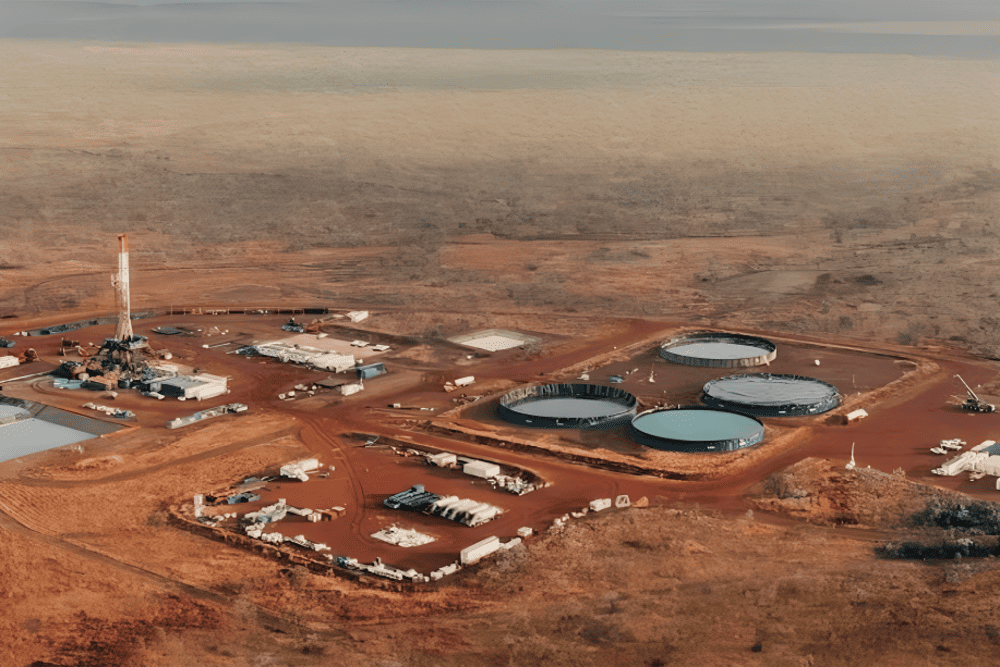
Carbon capture and storage (CCS) projects are expanding across the globe, with growth in both operating projects and those in development, but the industry still has a long way to go before showing its viability in mitigating substantial amounts of carbon.
The Global CCS Institute’s 2023 report showed there were 41 commercial-scale CCS projects in operation worldwide, with a further 26 in construction and 325 in development. There was a significant surge in CCS projects being developed in 2023, with 198 new facilities added to the project pipeline, a 102 per cent increase.
The 41 projects in operation have an annual carbon capture capacity of 49 million tonnes a year, while the total project pipeline capacity has grown to 361 million tonnes a year, a 48 per cent increase from 2022 and the highest jump since 2018. Jarrad Daniels, Chief Executive Officer at the Global CCS Institute, said: “The math is clear, CCS is an essential climate mitigation technology, without which it would be virtually impossible to achieve net-zero emission targets.
“However, the math also indicates that this past year’s impressive step-up still has us near the bottom of the staircase, so to speak, and that CCS must reach gigatonne per annum scale in order to reach our emission goals.” Research from various international agencies has consistently shown that carbon storage rates of about one gigatonne a year by 2030 and several gigatonnes by 2050 would be needed to achieve global climate targets.
Daniels added: “Policy makers, industry leaders, investors and the general public, are all feeling a growing urgency to address climate change, and that is accelerating many forms of mitigation, including CCS deployment, in leading regions around the globe. “However, to meet our climate change mitigation targets global investment in CCS deployment this decade must grow even faster.”
The CCS report revealed that 11 new countries had registered CCS facilities in various stages of development in 2023, reflecting growing support behind the industry. The United States still dominated deployment with 73 new facilities entering the pipeline in 2023, while other countries with high deployment include the UK, Canada, and China, all of which increased the number of proposed projects. According to the report, Australia now has 12 CCS facilities in development.
Another key factor reflective of growing acceptance of CCS is it becoming a more prominent feature of public policy, from inclusion in 28 countries’ nationally determined contributions (NDCs), to the provision of targeted policy to drive deployment and the drafting of appropriate regulations. By creating a CCS industry and becoming a storage hub for the Asia Pacific region, Australia could unlock up to $600 billion in revenue, according to recent research by Wood Mackenzie.
Wood Mackenzie noted that Australia had far higher geological carbon storage potential than it needed to store emissions from its power generation and industrial sectors from 2030 to 2050, and emphasised that Australia’s CCS opportunity was rooted in facilitating other countries’ net zero ambitions. Law firm Gilbert and Tobin have noted that the political and commercial landscape in Australia seemed to be shifting towards a desire to further embrace and utilise CCS technology, as part of an overall strategy to achieve a zero emissions economy.
This is echoed by the University of Adelaide’s Associate Professor Kathryn Amos, also Head of School at the Australian School of Petroleum, who said CCS represented one of Australia’s most significant opportunities to meet net zero carbon emissions. However, not all projects have been able to achieve the social licence and government approval to proceed, with the Queensland government in late May rejecting Glencore’s CCS project in southern Queensland on the basis that it could potentially cause irreversible long-term change to groundwater quality.
The Carbon Transport and Storage Corporation (CTSCo) project proposed to inject 330,000 tonnes of carbon dioxide from a coal-fired power station into an aquifer connected to the Great Artesian Basin, indicating that other CCS projects would not be viable in the Basin. Dave Copeman, Director of the Queensland Conservation Council, said the group had been lobbying the federal government to include a requirement to assess the impact of CCS projects on underground aquifers in an impending overhaul of the Environment Protection and Biodiversity Conservation Act.
He added: “We are calling for that expansion of nature laws to protect the Great Artesian Basin from the impacts of projects such as this.” Investor group Low Emission Technology Australia (LETA) expressed disappointment in the Queensland government’s decision that Glencore’s project was not suitable to proceed. LETA Chief Executive Officer Mark McCallum said the decision put at risk Queensland’s net zero ambitions and the future of the state’s critical industries.
He said: “Queensland has set ambitious net zero targets including 75 per cent net zero by 2035 – following today’s decision, Queensland’s net zero ambitions will cost more, take longer and may even be impossible. “This result is very disappointing for the future of Queensland’s critical industries including power generation and manufacturing. “Without a credible solution for reducing emissions from these hard to abate industries, their future becomes uncertain and Queensland jobs and communities are put at risk.”
McCallum noted that the decision raised significant concerns about the inconsistencies in Queensland legislation, with one Act of legislation facilitating and encouraging investment in carbon storage while a technicality in another Act preventing a project like Glencore’s from moving forward. He added: “The CTSCo project has been independently reviewed by Australian and global experts, including the Australian Government Independent Expert Scientific Committee, the Queensland Office of Groundwater Impact Assessment and CSIRO, who concluded that any impacts would be local and minor.
“If the CTSCo project does not go ahead, then Queensland will effectively be closing the door on CCS technology and turning its back on the future for some of the critical industries that we rely on every day.”




